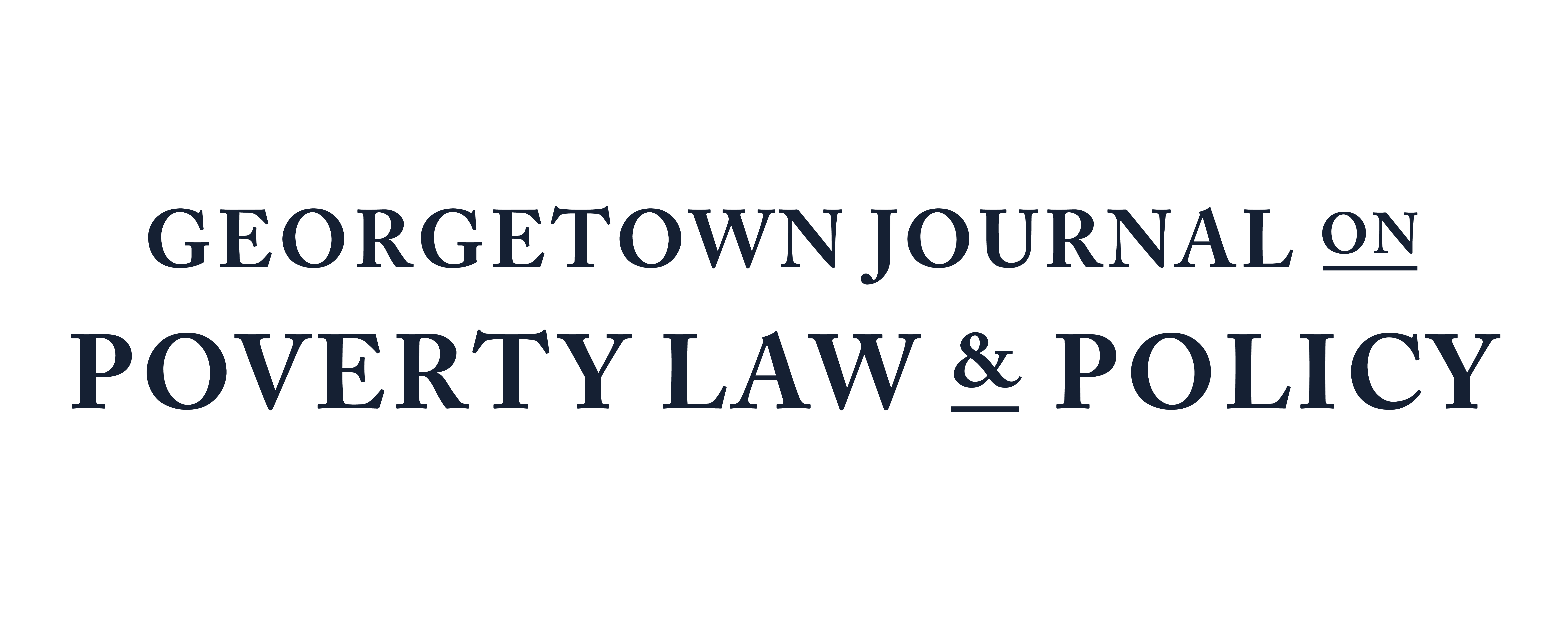Letter from the Editors
This Issue concludes the Georgetown Journal on Poverty Law and Policy’s publication of Volume 31. As Volume 31 comes to a close, we would like to thank all of the authors that contributed thoughtful and innovative scholarship to combat poverty and promote economic justice. We would also like to express our gratitude for our Faculty […]
Worker Outbursts, Workplace Rules and a Resurgence of Worker Voice
What started as the “Summer of Strikes,” as unions across different industries flexed their muscles and rode a wave of revived pro-labor sentiment, has turned into a year marked by some of the largest labor disputes in more than two decades. In total, 2023 saw 451 labor strikes, some of which have resulted in historic […]
Wage Theft Prosecution: How Prosecutors Can Help Workers and Create More Widespread Adoption
Wage theft is a problem affecting workers around the world, including the United States. Wage theft not only affects workers generally; it disproportionately affects low-wage workers. While there has been a lack of criminal prosecution historically, some jurisdictions changed direction in recent years by enacting stricter wage theft laws and prosecuting wage theft as a […]
Philly Building Philly: Identifying Local Government Best Practices for Improving HUD Section 3 Compliance in Philadelphia, Pennsylvania
This Note gives an overview of Section 3 of the Housing and Urban Development Act of 1968, commonly known as HUD Section 3. Section 3 requires that local governments that receive federal housing funds ensure the jobs and contracts the funds create go to residents of low-income areas. I first discuss HUD Section 3’s contents […]
Liberty, Equality, & Solidarity: A Constitutional Defense of Modern Work Law
American work-law jurisprudence reflects a tension between the legal conceptions of positive and negative liberty. Which of these conceptions predominates has varied across historical periods, with judicial support for negative liberties reaching its apex during the Lochner era and waning during the New Deal. The Supreme Court has recently decided two lines of cases concerning […]
Misunderstanding Criminal Recidivism: DCHA’s Public Housing Policies on Sex Offenders and Substance Abuse Do Not Foster Safer Communities
Experts on criminal recidivism are in consensus that housing instability is a risk factor for reoffending. Academic studies and common sense find that justice-involved individuals are more likely to suffer from financial stressors that would allow them to qualify for and need public housing assistance. To curb the cyclical nature of recidivism and housing instability, […]

